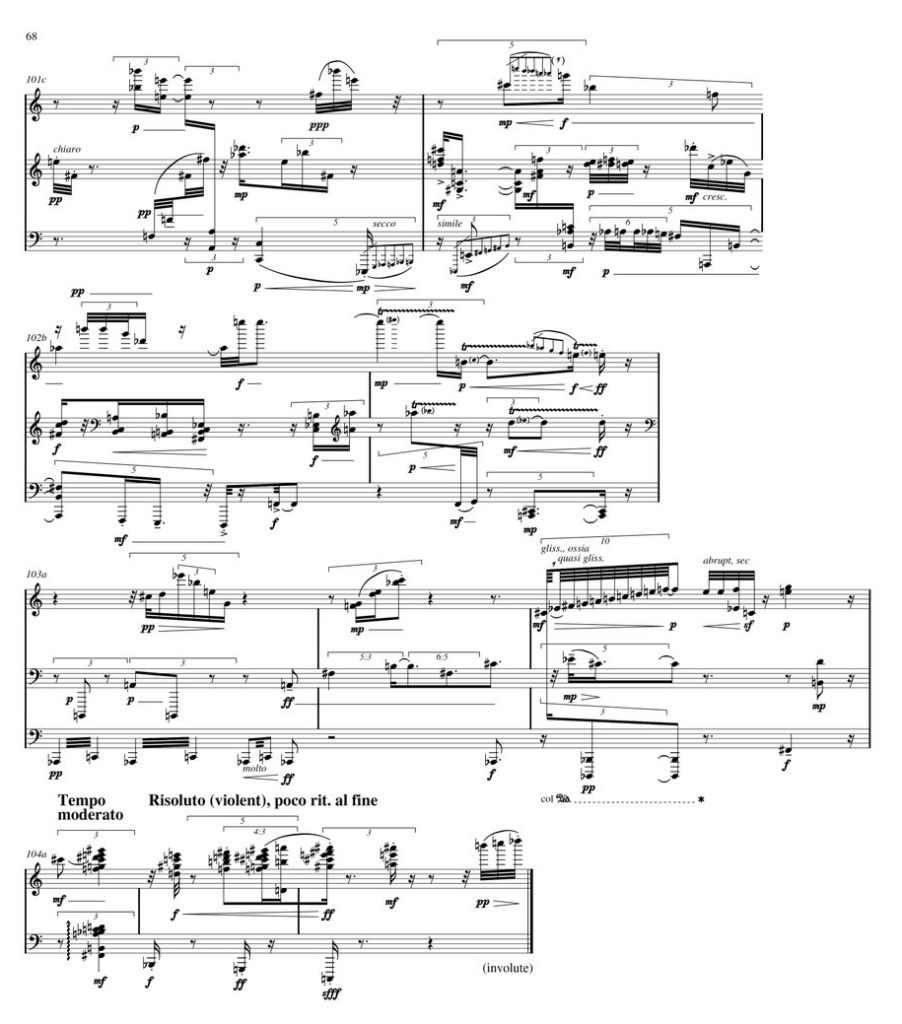Superposition is the ability of a quantum system to be in multiple states at the same time until it is measured.
–from WhatIs.com

I’ve been slowly working my way through Paul Griffiths’ Modern Music and After: Directions Since 1945, referenced by @maticevska on Twitter and subsequently recommended by many in the thread. Going slowly as I acclimate myself to the compositions I’m not yet familiar with (many), I’m only up to ~1952 and the total serialists. I had not known just how influential Messiaen was as a teacher; it’s the works of his students that I’ve been diving into. The three composers below all studied under him. Their works are “of their time” (I mean, just look at those album covers!) and the Messiaen influence periodically and with surprise comes through, though it would otherwise be unthinkable that any composer would be Messiaen-like considering those after his early impressionist works.
(I’m moving on somewhat from my many-year obsession with New Complexity to these serialist composers of the 1950s.)
My art history teacher when reviewing mannerist art described it, crudely, as painters attempting to mimic classical forms but doing so without the classical rigor. This sense of mannerism feels at times like a good description of how I’m developing my atonal voice.
Boulez was concerned to establish the foundations of a musical language, rules of musical grammar and vocabulary which composers could use to write scripts that would be their own.
–Paul Griffiths, Modern Music and After, page 39
These serialists had a rigorous language or languages that provided a new framework within which to work. One key aspect, however, of Boulez and others was that these strictures would accommodate “punching in” your own expressive choices to allow freedom within the serialist language. Dodecaphonic music was created to facilitate a pathway away from tonality (which is itself a rigid language taken at face). Twelve-tone technique is no different than the on-the-ground reality of rigid tonality in principle, but expressive freedom in practice.
The writing for this string quartet has so far been a continuation of what I’d done for the first. That intent has been there from the start. However, I still fluctuate between feeling that I’m in a rut with no new ideas, or that I’m clarifying my intent and fixing initial flawed experiments, or that I’m ultimately expanding the expressiveness of my approach. Maybe it’s a superposition of all three.

Karel Goeyvaerts (1923-1993) was a Belgian serialist who attended the famous Darmstadt New Music Summer School, took classes from Adorno, and became friends with Stockhausen while there. His works in the playlist below include his various chamber works designated as Nummers 1-7 (along with descriptive subtitles) written between 1950 and 1955. Of note is the first, the Sonata for 2 Pianos.
Jean Barraque (1928-1973) was a French composer with limited oeuvre who destroyed many of his works. Ah, the tortured artist. The Piano Sonata below is his earliest surviving work and it has some kinship with the above Goeyvaerts sonata.
Bill Hopkins (1943-1981) was a British composer (the older of these three) who studied not only with Messiaen but also with Barraque. His piano music below spans 1964 to 1972.